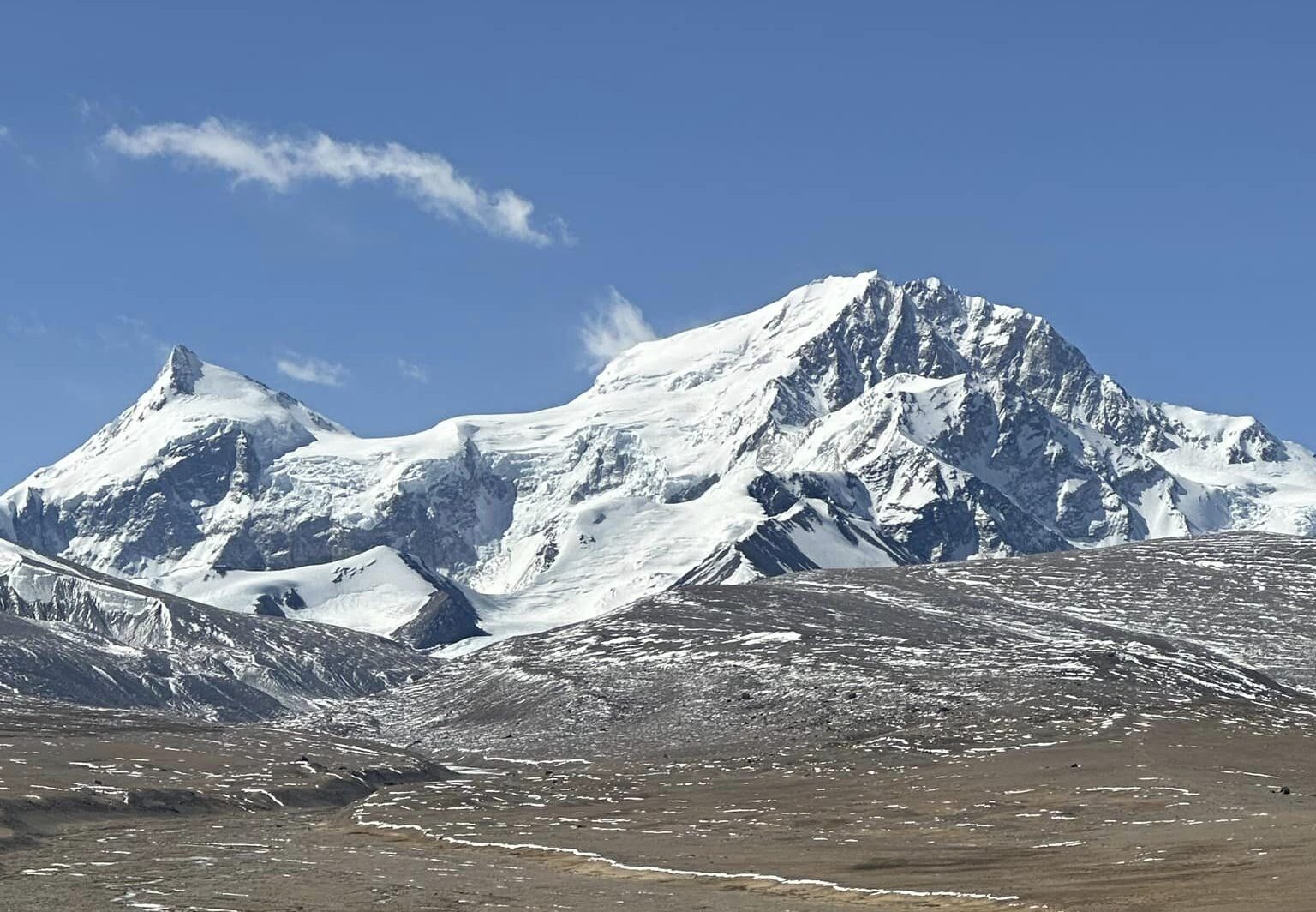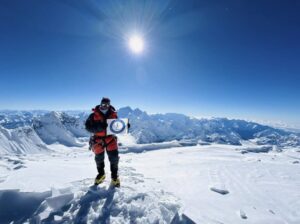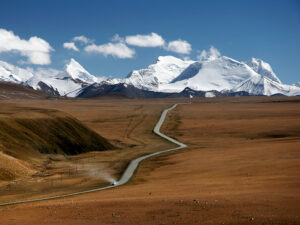So far, only two teams are definitely heading to Shisha Pangma. Others await and hope but have yet to receive their permits. Several climbers hope to complete their 14×8,000m list on Shisha Pangma.
Others have revealed — but not detailed — plans to retrieve the bodies of the four climbers killed in avalanches last fall, adding to the general uncertainty.
Veteran guide Mingma G will likely not be there. That may end his long-time dream of becoming the first Nepalese to summit all 14 8,000’ers without supplementary oxygen.
Season supposedly on
Climbalaya’s expedition to Shisha Pangma runs between April 9 and May 19. The company has close contacts with the China-Tibet Mountaineering Association (CMTA), which grants the permits.
“We are expecting to cross the border around the second week of April,” a spokesperson told ExplorersWeb.
Climbalaya often pairs up with Seven Summit Treks, but this time, “we will share the workload on the mountain, like rope fixing, but have separate teams.”

The upper slopes of Shisha Pangma, where two consecutive avalanches took four lives last autumn. Photo: Mario Vielmo
Several familiar names from recent years hope to finish their 14×8,000m list on Shisha Pangma. Among them Naoko Watanabe of Japan, Grace Tseng of Taiwan (though her Manaslu summit remains questionable), and Mario Vielmo of Italy in the no-O2 category.
Vielmo told ExplorersWeb that Seven Summit Treks has confirmed the rather pricey trip. Although 8,027m Shisha Pangma is the lowest of the 14 big peaks, a commercial climb costs $25,000 to $35,000.
Meanwhile, some companies are on the verge of giving up expeditions to Tibet because of the uncertainty with permits. Among them is Imagine Nepal. Company head Mingma G explained the situation to Explorersweb.
“We are still waiting,” said the IFMGA guide. “If they issue the permits late in the season, I’ll have no chance to go. I have a big Everest team climbing from the Nepal side and I have to lead them.”
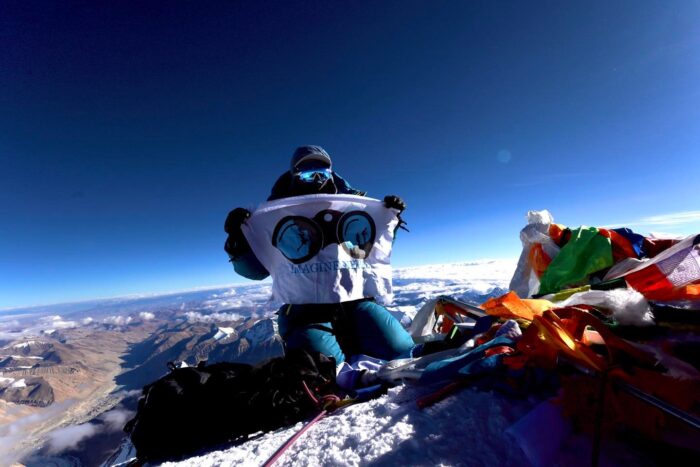
Mingma G on the summit of Everest without supplementary oxygen. Photo: Imagine Nepal
Bottled oxygen compulsory in Tibet
Safety is another reason to go to Shisha Pangma in spring. “Usually Shishapangma is good in April, but as the season advances, there are more avalanches and the crevasses are hidden,” Mingma G explained.
Mingma G has only Shisha Pangma left to become the first Nepali to summit all 14 8,000’ers without supplementary oxygen. But even if his group receives its permit in time, Mingma G couldn’t climb no-O2. The CMTA has made the use of bottled oxygen compulsory for all three Tibetan 8,000ers (Shisha Pangma, Cho Oyu, and Everest North Side). Mario Vielmo, the Italian no-O2 climber, faces the same barrier.
“We Sherpas have been climbing and guiding for so long, but none of us has completed that challenge, so I thought I could represent my collectivity,” Mingma G explained. “Otherwise, I don’t have any interest in climbing 8,000m without oxygen, especially while leading a team.”
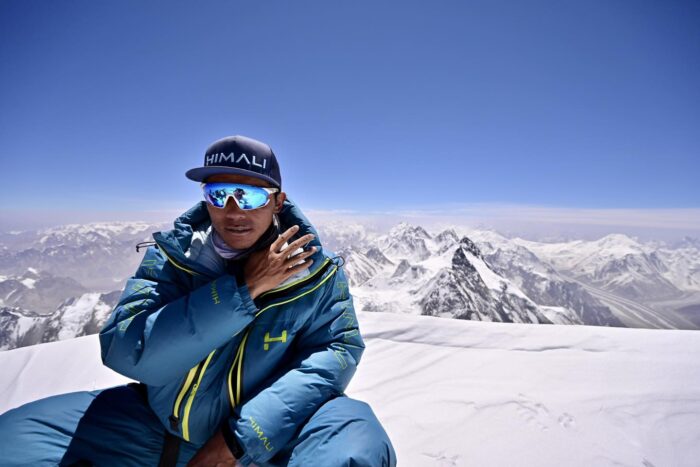
Mingma G on the summit of Everest, without supplementary O2. Photo: Imagine Nepal
The scars of altitude
Mingma G adds: “The more time we spend at 8,000m, the more damage we get in our brain cells.” He admits that he is already suffering from memory loss. “We are not like our foreign friends, who do one or two expeditions in a year, then get enough time to recover. We are mostly on mountains and we keep damaging our bodies without enough time to recover.”

Nirmal Purja and Mingma G (Gyalze) Sherpa at Cho Oyu Base Camp. Photo: Naoki Ishikawa
Mingma G also denies being in any kind of competition with Nirmal Purja to become the first no-O2 Nepalese. (Purja was born in Nepal but has a UK passport and is not a Sherpa.)
Two recovery missions?
Two expeditions have been announced to recover the bodies from last fall’s fatal Shisha Pangma avalanches. Two women and their supporting sherpas died during a reckless race to become the first U.S. female to complete the 14×8,000’ers.
Anna Gutu and Mingmar Sherpa were killed, but not buried, in the first of the two avalanches that day. The bodies were later taken to a tent in Camp 2. Strangely, they are still there.
Two weeks ago, the expedition leader (who was below the climbers when the fatal incident took place) announced on X an upcoming recovery mission.
“With permission from the CTMA and TMA [Tibet Mountaineering Association], we are ready to go back to their known location at Camp 2 and bring them home to reunite them with their families and loved ones,” the statement read. “The U.S. government, Nepalese Embassy in Beijing, and NMA [Nepal Mountaineering Association] have worked closely with the team to secure permits…We have recently been informed our application will be accepted. We will begin the repatriation in April.”
There are no details about who will conduct the recovery. Elite Exped has not announced any commercial expeditions for spring.
Second project
As for the mission to recover the other two fatalities, Gina Marie Rudzidlo and Tenjen Lama, Kristin Harila has been trying to raise funds for a recovery mission. The idea is apparently to fly a helicopter over the route in the hope of locating the bodies thanks to the Recco reflectors the climbers wore.
However, the plan will hardly work if the avalanche swept the bodies deep into a crevasse, as witnesses have reported. There is also no confirmation about how a helicopter flight will be permitted in Tibet, where there is no aerial rescue service.
Harila’s GoFundMe account has had no donations in the last month, and the total amount raised so far is 91,902 Norwegian Kr ($8,500) out of a proposed budget of 3,190,000 Kr (about $300,000).
